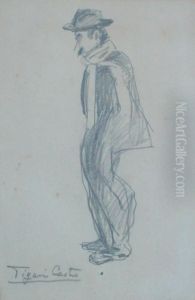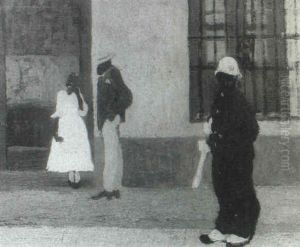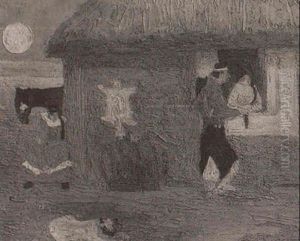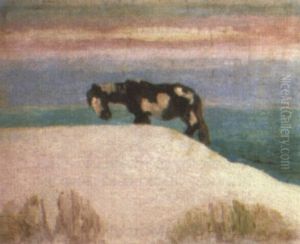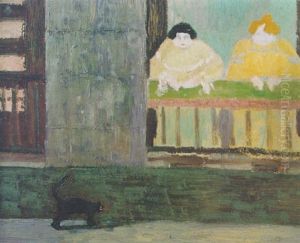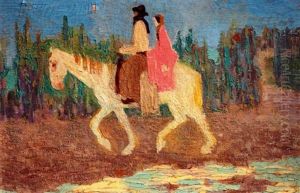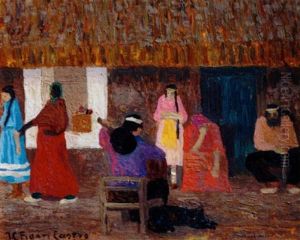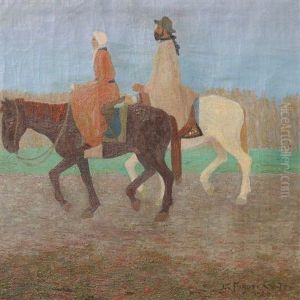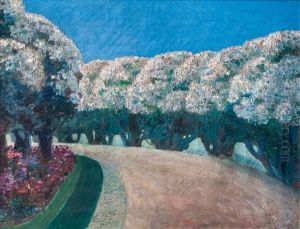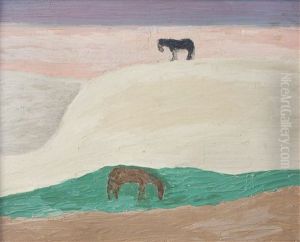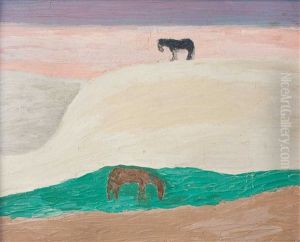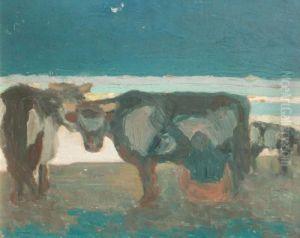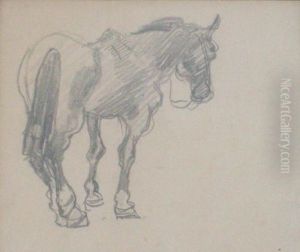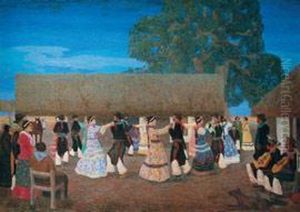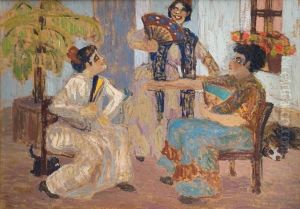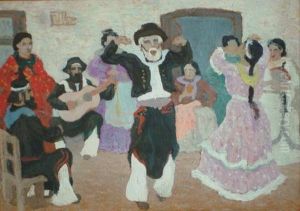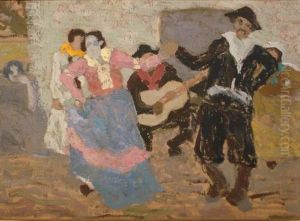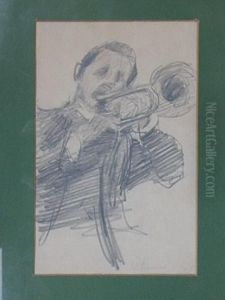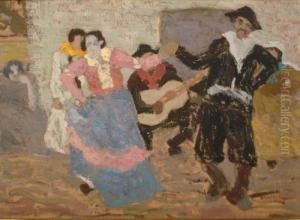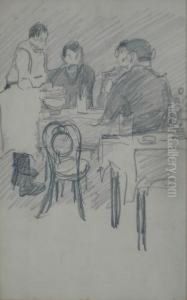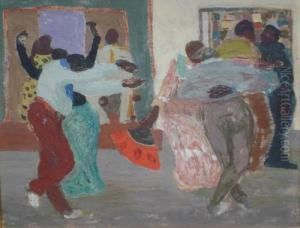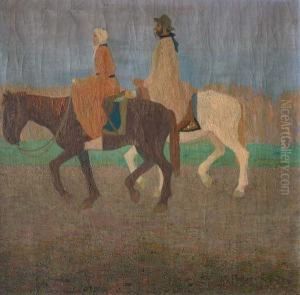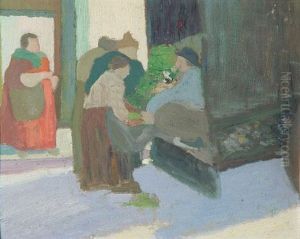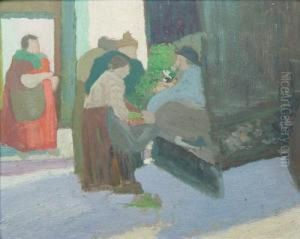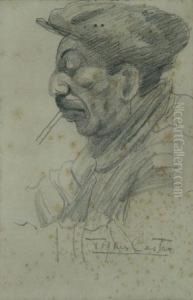Juan Carlos Figari Castro Paintings
Juan Carlos Figari Castro, often known simply as Pedro Figari, was a pivotal Uruguayan painter, lawyer, writer, and politician born on June 29, 1866, in Montevideo, Uruguay. Coming from a background steeped in the arts and culture, Figari developed a unique style that was deeply influenced by the culture, traditions, and daily life of Uruguay and the broader region of the Rio de la Plata.
Figari's early career was not in the arts but in law and politics. He pursued a law degree and became actively involved in Uruguay's political scene. However, his passion for painting and the arts, which he nurtured alongside his professional career, eventually took precedence. By the early 20th century, Figari decided to dedicate himself fully to painting, leaving behind his career in law.
His artistic work is characterized by the use of bold colors, loose brushwork, and a focus on themes such as Uruguayan folklore, Afro-Uruguayan candombe dances, domestic scenes, and historical events. Figari sought to capture the essence and spirit of Uruguay's culture and people, often depicting scenes of everyday life with a sense of nostalgia and affection.
In addition to his paintings, Figari was a prolific writer and thinker. He penned essays on the philosophy of art, education, and culture, advocating for the importance of cultural identity and the need to preserve and celebrate Latin American traditions. His writings contributed significantly to cultural discourse in Uruguay and Latin America during his time.
Figari's later years were marked by increasing recognition and acclaim for his work, both in Uruguay and internationally. He traveled to Europe, where he was influenced by the post-impressionist movement, incorporating elements of this style into his own work. Despite this, he remained deeply rooted in the cultural identity of his homeland.
Pedro Figari passed away on July 24, 1938, in Montevideo. Today, he is celebrated as one of Uruguay's most important and influential artists, with his work continuing to be admired for its vibrant portrayal of South American life and culture. His legacy is preserved through museums dedicated to his work in Uruguay and the continued study and appreciation of his contributions to art and cultural discourse.
